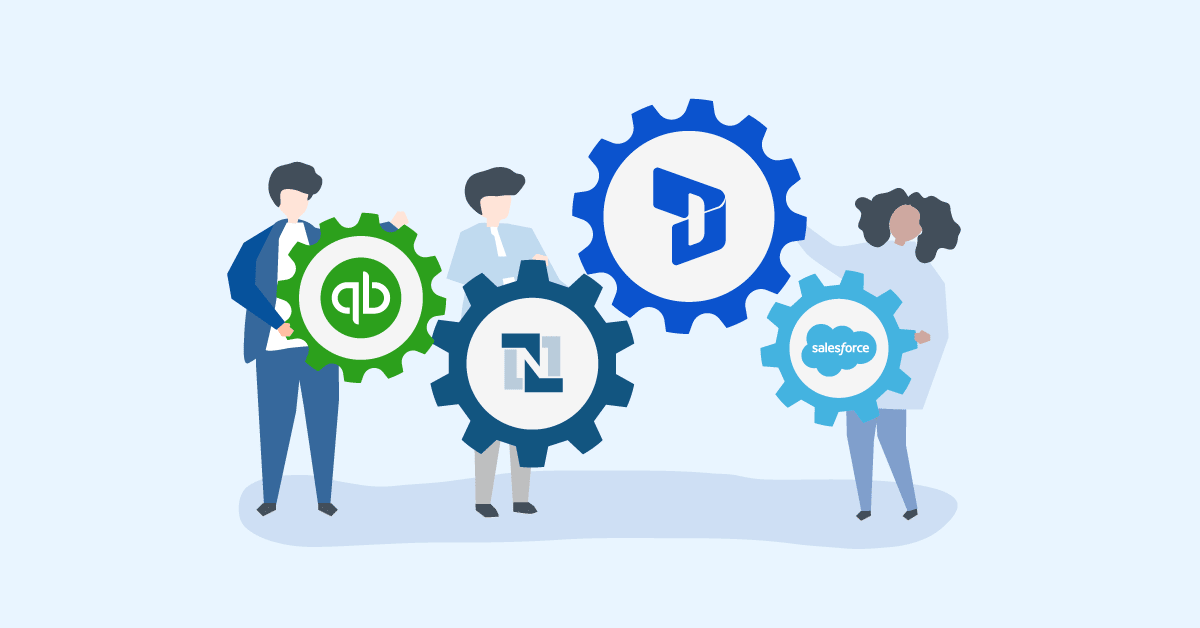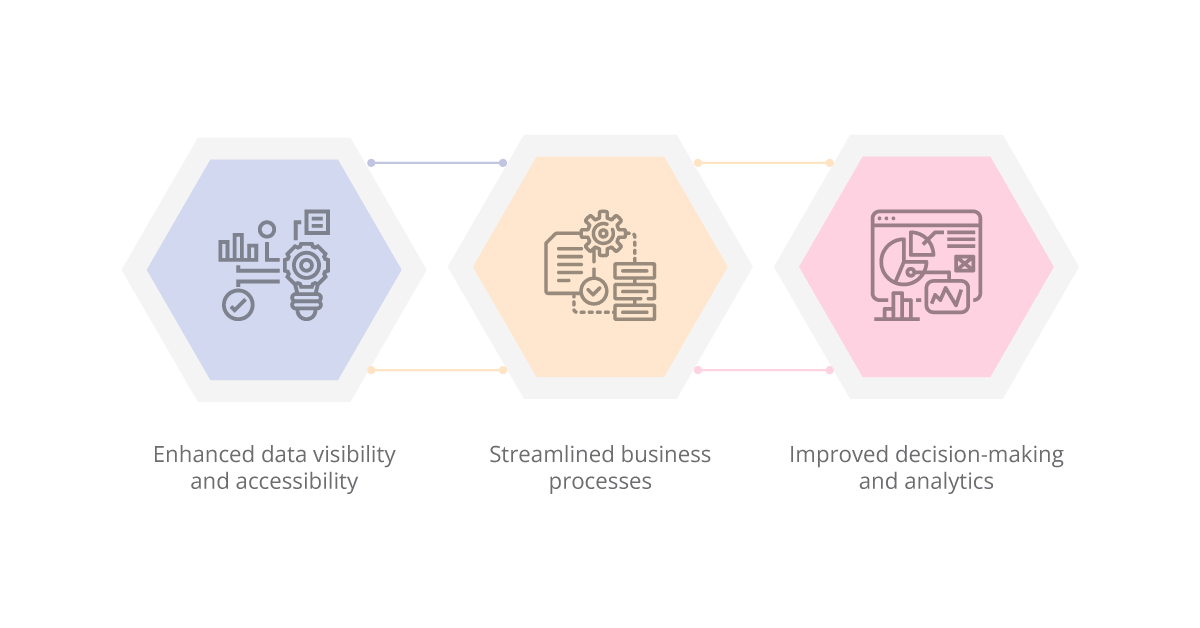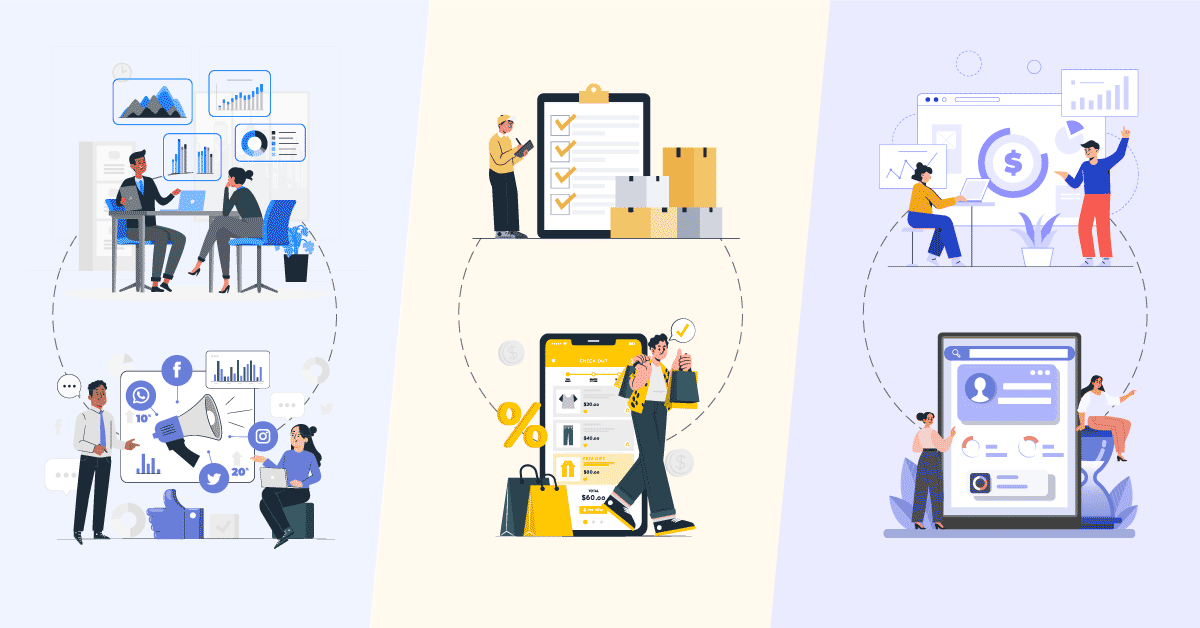In the sprawling digital realm where organizations navigate a landscape abundant with diverse software systems, the quest for efficiency and optimal performance has become paramount. Yet, the absence of seamless integration among these systems often spawns a labyrinth of inefficiencies, data disparities, and untapped potential. To conquer this digital divide, organizations must embark on a transformative journey of harmonizing multiple software systems, transcending barriers, and unleashing the true power of collaboration. By seamlessly integrating these systems, organizations can streamline workflows, eradicate data silos, and unleash the untapped potential residing within their interconnected software ecosystem.
In this blog, we delve into the art of seamlessly integrating multiple software systems, paving the path to improved efficiency and enhanced operational harmony. By exploring the challenges faced, the benefits gained, and the best practices employed, we equip you with the knowledge and insights to orchestrate a symphony of software integration that propels your organization toward peak performance. Join us as we embark on a voyage through the digital seas, navigating the complexities and unlocking the secrets to seamless software integration.
Aonflow iPaaS – Free for First 3 Months!
Build and run up to 1,500 transactions monthly with no cost. No payment info needed!
Challenges of integrating multiple software systems
While the vision of seamlessly integrating software systems may seem enticing, it is essential to acknowledge and address the challenges that organizations encounter in this process. By understanding these hurdles, organizations can proactively develop strategies to overcome them. Let’s explore some of the key challenges:
Incompatibility and data inconsistencies:
Integrating disparate software systems often involves dealing with incompatible data formats, structures, and protocols. Each system may have its unique way of organizing and representing data, making it difficult to transfer information seamlessly. As a result, data inconsistencies may arise, leading to errors, redundancies, and confusion. For instance, a customer’s contact information may be stored differently in the CRM system compared to the billing system, causing discrepancies in customer records and hampering effective communication.
To overcome this challenge, organizations must invest in data mapping and harmonization. This process involves identifying the differences in data structures and developing mappings to align and transform the data appropriately. By establishing standardized data formats and adopting data governance practices, organizations can ensure data consistency and integrity across integrated systems.
Complexity and technical constraints:
Integrating multiple software systems can be a complex endeavor, especially as organizations scale and expand their technological infrastructure. Legacy systems, custom-built solutions, and proprietary APIs often present technical constraints that hinder seamless integration. Furthermore, the intricacies of integrating various systems with different architectures, programming languages, and database technologies can pose significant challenges.
Overcoming these complexities requires a comprehensive understanding of the systems involved and the expertise to navigate through integration hurdles. It is crucial to leverage integration tools and platforms that offer a wide range of connectors, adapters, and transformation capabilities. These tools streamline the integration process, simplify data mapping, and facilitate communication between diverse systems. Additionally, organizations may need to invest in specialized resources or seek external expertise to tackle complex integration scenarios.
Security and privacy concerns:
As organizations exchange data between interconnected systems, ensuring data security and privacy becomes a critical consideration. The integration process must incorporate robust security measures to protect sensitive information from unauthorized access, data breaches, and compliance violations. Integrating systems without proper security protocols can expose organizations to significant risks.
Organizations must prioritize data security throughout the integration journey. This includes implementing strong authentication mechanisms, data encryption techniques, and access controls. Regular security audits, vulnerability assessments, and compliance checks are essential to maintain a secure integration environment. By adhering to industry standards and regulations such as the General Data Protection Regulation (GDPR) or the Health Insurance Portability and Accountability Act (HIPAA), organizations can demonstrate their commitment to safeguarding customer data and sensitive information.
Benefits of seamless software integration
Despite the challenges, the benefits of seamless software integration far outweigh the hurdles encountered along the way. Let’s explore the advantages organizations can reap by achieving a harmonious integration of multiple software systems:
Enhanced data visibility and accessibility:
Integrating software systems enables real-time data synchronization and consolidation, providing organizations with a comprehensive view of their operations. With all relevant data accessible from a central location, stakeholders can make informed decisions based on accurate and up-to-date information. For example, integrating customer relationship management (CRM) software with marketing automation systems ensures that sales teams and marketing teams have a unified view of customer interactions, enabling targeted and personalized campaigns.
Furthermore, integrated systems empower employees with self-service access to the data they need, reducing dependency on IT teams for information retrieval. This enhanced data visibility and accessibility foster collaboration, empower decision-making, and drive organizational efficiency.
Streamlined business processes:
Seamless software integration eliminates manual data entry, reduces duplication of effort, and automates workflows across systems. By integrating systems such as enterprise resource planning (ERP), supply chain management, and inventory management, organizations can optimize their business processes. For example, when an order is placed in an e-commerce platform, the integration with the inventory management system automatically updates the stock levels and triggers the fulfillment process. This automation not only reduces errors but also improves the speed and accuracy of order processing.
Additionally, integration enables the flow of real-time information between systems, eliminating delays caused by data transfer bottlenecks. As a result, organizations can respond swiftly to customer demands, make informed decisions, and adapt to dynamic market conditions.
Improved decision-making and analytics:
Integrated software systems provide a consolidated data repository, allowing organizations to perform comprehensive analytics and gain valuable insights. By integrating customer data, sales data, and financial data, organizations can derive meaningful patterns, trends, and correlations. These insights enable data-driven decision-making, empower organizations to identify market opportunities, and optimize resource allocation.
For example, an organization that integrates its CRM system with business intelligence tools can generate reports and dashboards that provide a holistic view of customer interactions, sales performance, and revenue trends. These analytics aid in forecasting, identifying customer preferences and designing targeted marketing strategies.
Aonflow is the leading integration platform.
You can kick-start by integrating your first-ever workflow in just a matter of minutes.
Choosing the right iPaaS solution
When embarking on the journey of seamless software integration, organizations need to select the right Integration Platform as a Service (iPaaS) solution. iPaaS platforms offer a range of tools, capabilities, and features designed to facilitate smooth and efficient integration. Here are some considerations to keep in mind while choosing an iPaaS solution:
Understanding iPaaS:
iPaaS is a cloud-based platform that facilitates the integration of disparate systems, applications, and data sources. It provides pre-built connectors, data transformation capabilities, and workflow management tools that simplify the integration process. Understanding the fundamentals of iPaaS and its potential benefits is crucial when evaluating available options.
Evaluating integration requirements:
Before selecting an iPaaS solution, it is essential to evaluate your organization’s integration requirements. Consider factors such as the number and types of systems to be integrated, data volumes, integration frequency, and the complexity of data transformations required. This evaluation will help you determine the scalability, performance, and capabilities needed from an iPaaS platform.
Considering scalability and flexibility:
As your organization grows, so will the demand for integration. It is vital to choose an iPaaS solution that can scale with your evolving needs. Consider whether the platform can handle increasing data volumes, support integration with new systems, and accommodate future expansion. A flexible iPaaS solution allows for easy integration of additional applications and systems, ensuring long-term compatibility and adaptability.
Examining security features:
Data security is of utmost importance when integrating multiple software systems. Evaluate the security features offered by the iPaaS solution, such as data encryption, secure authentication mechanisms, and compliance with industry standards. Ensure that the iPaaS platform aligns with your organization’s security requirements and regulations to protect sensitive data throughout the integration process.
By carefully assessing these factors and aligning them with your organization’s integration goals and requirements, you can select an iPaaS solution that meets your needs and sets the stage for seamless software integration.
Best practices for seamless software integration
To achieve seamless software integration, organizations should follow certain best practices that ensure smooth collaboration between systems and maximize the benefits of integration. Let’s explore these practices:
Mapping and harmonizing data:
One of the fundamental steps in seamless integration is mapping and harmonizing data across systems. This process involves understanding the data structures, formats, and semantics used by each system and developing a mapping strategy to align them. Data mapping ensures that information flows smoothly between systems, without loss or distortion.
Consider conducting a thorough analysis of the data elements, identifying commonalities, and defining a standard format that accommodates the requirements of all integrated systems. By establishing clear rules and guidelines for data transformation, organizations can ensure consistency, accuracy, and compatibility during the integration process.
Implementing standardized protocols and APIs:
Standardized protocols and Application Programming Interfaces (APIs) play a vital role in achieving seamless integration. Utilize industry-standard protocols such as Representational State Transfer (REST) or Simple Object Access Protocol (SOAP) to enable communication between systems. These protocols provide a common language that facilitates interoperability and simplifies the integration process.
Additionally, leverage APIs offered by the software systems involved in integration. APIs define the methods, data structures, and rules for interacting with specific systems. By adopting common APIs, organizations can establish a unified approach to integration and reduce complexities associated with custom interfaces.
Prioritizing data security and compliance:
As data flows between interconnected systems, organizations must prioritize data security and compliance. Establish stringent security measures to safeguard sensitive information, protect against unauthorized access, and prevent data breaches. Encryption techniques, secure authentication mechanisms, and role-based access controls are crucial components of a robust security framework.
Compliance with relevant regulations such as GDPR or HIPAA is also essential. Ensure that the iPaaS solution complies with these regulations and provides features that support data privacy and compliance requirements. Regular audits, vulnerability assessments, and security updates should be conducted to maintain a secure integration environment.
Testing and monitoring integration workflows:
Thorough testing of integration workflows is essential to ensure data integrity, reliability, and error handling. Create comprehensive test scenarios that cover different integration scenarios, including data validation, error handling, and exception scenarios. Conducting rigorous testing helps identify and rectify issues before deploying the integration solution.
Continuous monitoring of integration processes, performance metrics, and error logs is equally important. Implement monitoring tools and practices to track the flow of data, identify bottlenecks, and proactively address any anomalies or errors. Timely detection and resolution of issues optimize the efficiency and reliability of integrated systems.
Use cases and examples
Integration of CRM and marketing automation systems:
Organizations often rely on both CRM systems and marketing automation platforms to manage customer relationships and execute targeted marketing campaigns. By integrating these systems, organizations can seamlessly transfer customer data, automate lead nurturing, and personalize marketing campaigns based on customer behavior and preferences.
For example, a retail company may integrate its CRM system with a marketing automation platform to synchronize customer data, such as purchase history and preferences. This integration allows the marketing team to design personalized email campaigns, trigger automated follow-ups based on customer interactions, and track the effectiveness of marketing initiatives. As a result, the company can enhance customer engagement, increase conversion rates, and drive revenue growth.
Connecting inventory management with e-commerce platforms:
E-commerce businesses rely on accurate and up-to-date inventory information to ensure smooth order processing and prevent stockouts. Integrating inventory management systems with e-commerce platforms allows organizations to synchronize product availability, update inventory levels in real-time, and automate order fulfillment processes.
For instance, a clothing retailer integrating its inventory management system with its online store ensures that the stock levels are always accurate and reflect real-time changes. When a customer places an order, the integration triggers an automatic update of the inventory system, ensuring that the item is reserved and the stock levels are adjusted accordingly. This integration eliminates manual inventory management tasks, reduces errors, and enhances the overall customer experience.
Streamlining HR processes with payroll and employee management systems:
Human resources departments often deal with various software systems for tasks such as employee onboarding, time tracking, payroll processing, and performance management. Integrating HR software, payroll systems, and employee management platforms streamlines these processes, eliminates manual data entry, reduces errors, and enhances overall HR efficiency.
For example, integrating an HR system with a payroll system allows for seamless transfer of employee data, such as work hours and compensation details. The integration ensures that employee information is accurately reflected in the payroll system, reducing administrative burdens and minimizing the risk of payroll errors. Furthermore, integrated performance management systems can automate performance reviews, goal setting, and training initiatives, improving employee productivity and engagement.
Conclusion
Seamlessly integrating multiple software systems is a transformative journey that organizations must undertake to unlock the full potential of their data and optimize operational efficiency. While challenges may arise, such as data inconsistencies, technical complexities, and security concerns, organizations can overcome these hurdles by adopting best practices, leveraging iPaaS solutions, and prioritizing data security.
The benefits of seamless software integration are substantial, ranging from enhanced data visibility and streamlined business processes to improved decision-making and analytics. By integrating systems effectively, organizations can harness the power of collaboration, optimize workflows, and gain a competitive edge in today’s digital landscape.
As organizations evaluate their integration needs, it is crucial to select the right iPaaS solution that aligns with their requirements, offers scalability, and ensures data security and compliance. By following best practices and exploring integration use cases, organizations can embark on a successful integration journey, revolutionizing their operations and driving sustainable growth in the ever-evolving digital era.
Aonflow iPaaS – Free for First 3 Months!
Build and run up to 1,500 transactions monthly with no cost. No payment info needed!


